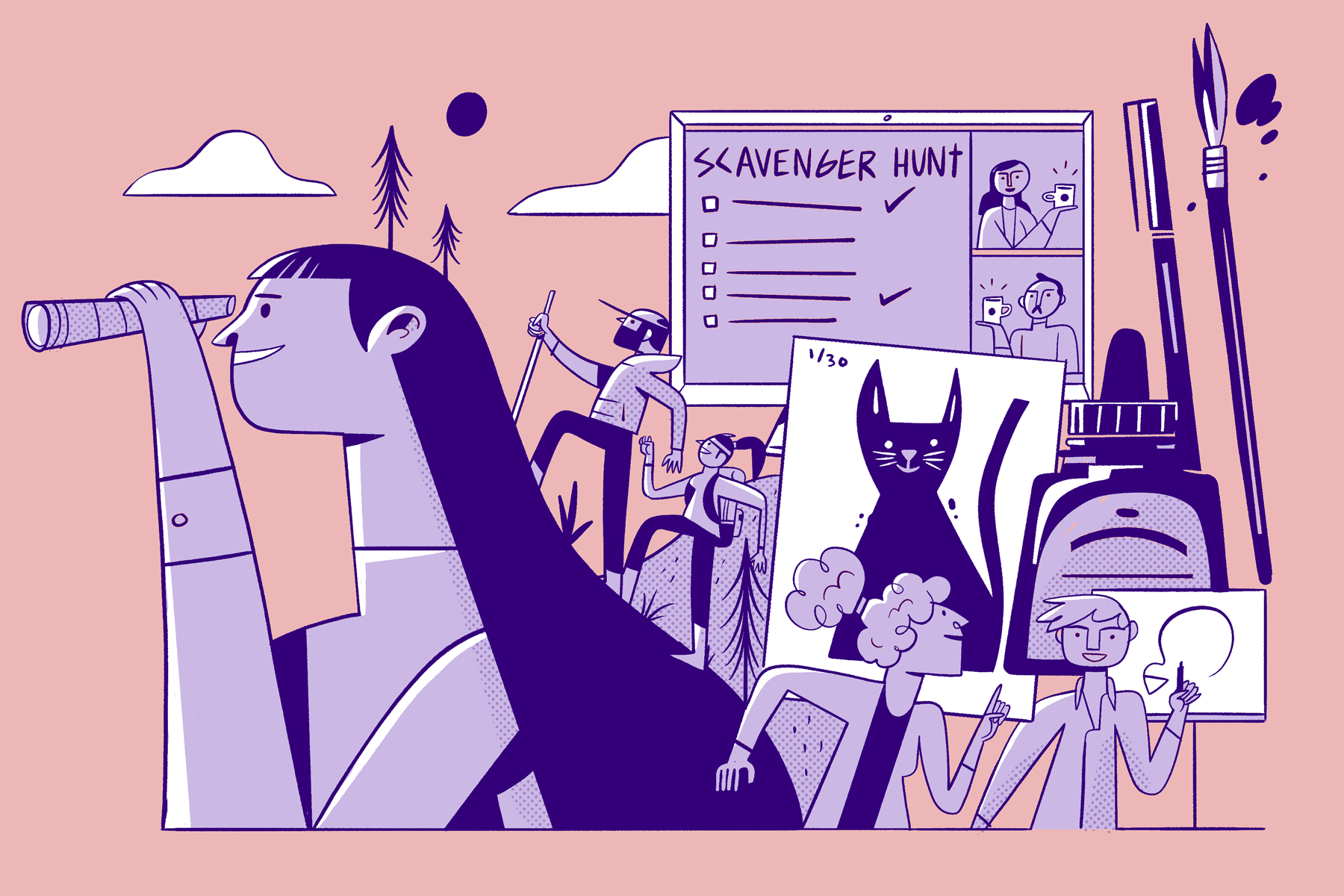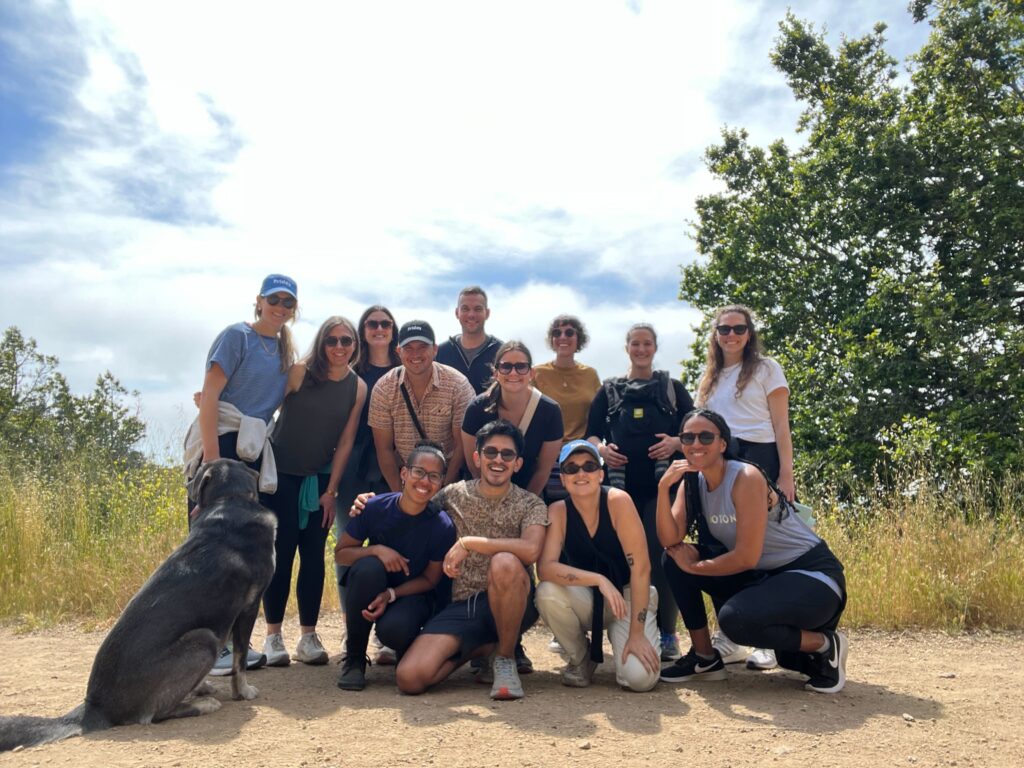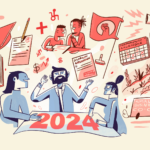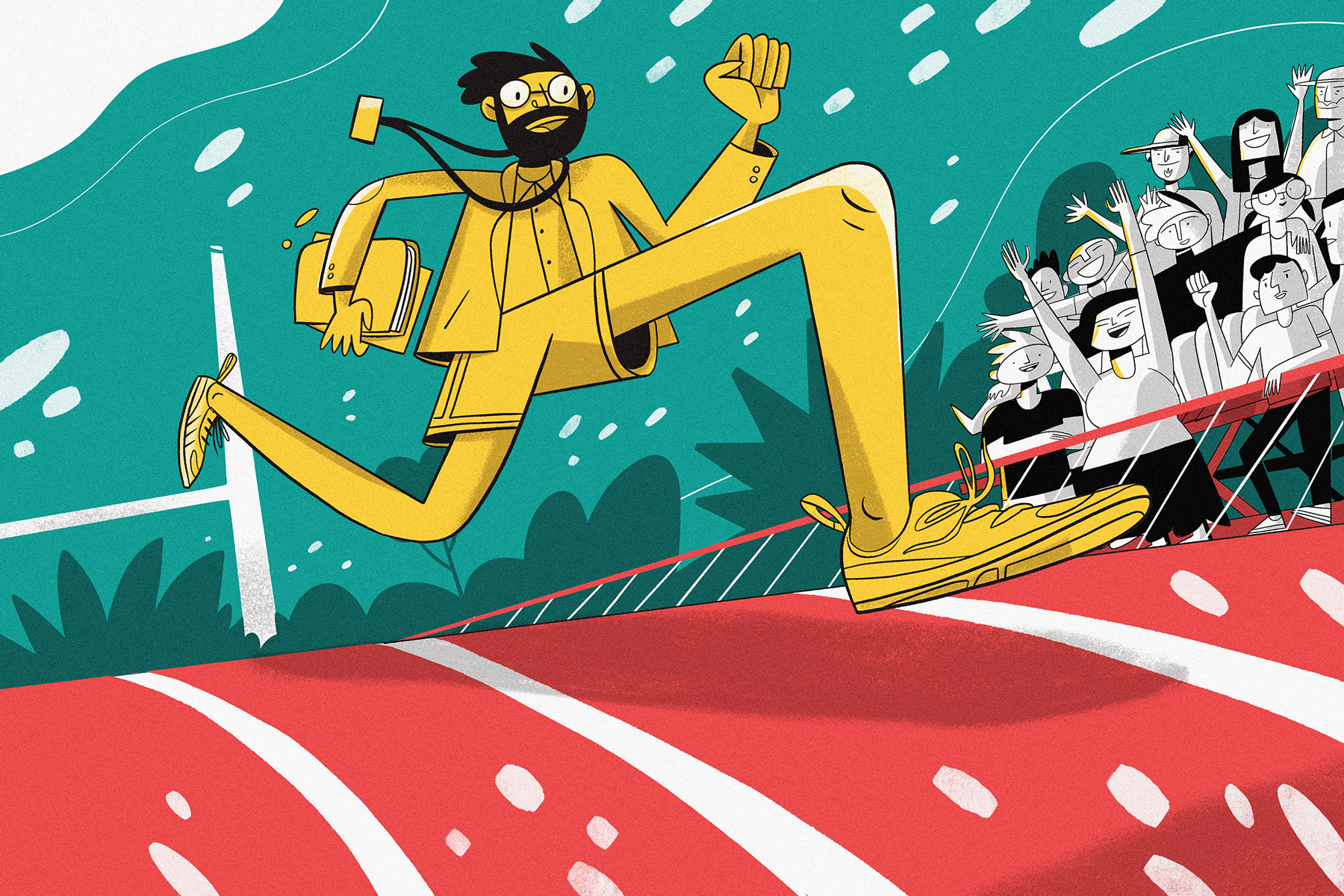
Empowering your team to (re)discover their creative potential
“Are you considering becoming a creative person? Too late, you already are one.”
– Elizabeth Gilbert
At Friday, we work with clients who are changing complex systems – building stronger education systems, more equitable economies, and more vibrant communities. These types of social change require out-of-the-box thinking. As a strategy and design social impact consulting firm, it’s our job to help surface creative solutions and move them into action. But the creative part of the work isn’t only reserved for the “creative team” – the designers, writers, illustrators, photographers, etc. All of us have creative potential inside of us.
In her book, Big Magic: Creative Living Beyond Fear, Elizabeth Gilbert argues that creativity is the hallmark of being human. We have the senses for it; we have the curiosity for it; we have the opposable thumbs for it; we have the rhythm for it; we have the language and the excitement for it. As a mom to a three-year-old, I’m reminded daily that a preschooler’s creativity flows endlessly. Yet somewhere along the way, many of us – myself included – shed our identity as creative individuals.
Scientist and author Scott Barry Kaufman explains that we are all neurologically wired to create. In fact, the concept of individuals having a dominant left brain or right brain informing your innate talents is a scientifically-debunked myth. The key, Kaufman explains, is recognizing that creativity is incredibly multifaceted and can be displayed in many different ways. Rather than thinking of creativity as an exclusive aptitude, it’s something we can practice and cultivate. And by practicing creativity, we can all unlock out-of-the-box thinking to drive our collective and individual missions forward.
I’ve shared Friday’s Cultural Norms that we set in 2019 to document the way we want to work together. One norm is: “We create time for creativity. We encourage time and space for activities that spark creativity individually, and together.” This norm reiterates our belief that creative exploration and expression is beneficial for everyone, and makes the quality of work stronger. But, for the years that followed, team feedback signaled that this norm had considerable room for improvement. Here’s what I’ve learned so far about cultivating a work culture that supports creativity, whether you’re in-person or remote.
1. Play at work can actually be enjoyable
Play is considered a significant factor in a child’s cognitive development. It is also a habit of highly creative people. Researcher and storyteller Brené Brown defines the elements of play as (1) time spent without purpose, (2) something you don’t want to end, and (3) leading to a loss of self-consciousness. There isn’t a right or a wrong way to play as long as the activity fits within the elements of play. Play – like creativity – means something different for everyone.
When people play together, they are able to build connections through the shared experience. But incorporating play in the day-to-day of work isn’t easy to do. After all, there is work that needs to be done. The key is to find the right time and space ways to weave it in. A few ways we’ve incorporated play at Friday include:
- Hiking in the Berkeley Hills during a team retreat
- Virtual or in-person scavenger hunts
- Inviting the team to participate in Inktober and share creations in a Slack channel all month long (shout out to our Lead Designer Joey for introducing and leading this charge)
- Challenging each other to an online game of Scattergories or Pictionary on a Friday afternoon

Friday team hiking in the Berkeley Hills.
Sometimes we consider icebreakers and check-in questions as a form of play, which with a familiar group of people can hold true. But at the same time, being pressured to participate in activities that don’t resonate with someone’s version of play will have an adverse impact. One person’s welcomed “time without purpose” may be another person’s inconsiderate waste of time. When possible, we try to make these types of activities “opt-in” instead of “opt-out”, giving folks the opportunity to bow out without question, to stay off camera or participate via the chat.
Play also alleviates stress and burnout, which as a working mom and business owner, also happens to be a personal interest of mine.
2. Creative rest
As I learned more about the benefits of play, I noticed its intersection with rest. One of my favorite podcasts (The Hustle Sanely Podcast) introduced me to the seven types of rest coined by Dr. Saundra Dalton Smith’s research.
Seven types of rest:
- Physical Rest: Passive (sleeping) & active (yoga, stretching, massage)
- Mental Rest: Give your brain a break (technology break, stillness, quiet time)
- Creative Rest: A break from problem solving, brainstorming, pitching ideas (time outdoors, reading, doodling, dancing)
- Emotional Rest: Freely express feelings, decompress from emotionally-charged work (journaling, holding boundaries)
- Sensory Rest: A break for lights, screens, noise (driving in silence, meditation)
- Social Rest: Time away from people (me-time, saying “no”)
- Spiritual Rest: Connecting to purpose (reflection, community, service, faith)
Among the seven types of rest, she highlights creative rest as an essential piece of combating burnout in our culture of high-achieving, high-producing hustle. Creative rest serves as a break to recharge from creative problem-solving, brainstorming, and collaboration activities. In practice, Dr. Dalton Smith says, creative rest reawakens the childlike awe and wonder in each of us. For example, creative rest can look like taking in the beauty of nature or immersing yourself in an art exhibit. You can also rest through a creative outlet – dancing, doodling, coloring, crocheting.

“Inktober” expressions of the word TOAD by Friday team members.
In the social impact space, there is no shortage of passion for our work. I’ve seen time and time again, in both nonprofit organizations and mission-driven businesses like Friday, that passionate, nimble, small but mighty teams can equate with accepting the hustle culture that Dr. Dalton Smith warned against. As leaders we should normalize hustling with clear intention, so that we can simultaneously empower our teams to take the rest they need – all seven types.
3. Space & Freedom
So we know that both play and creative rest can boost our creativity. And we also know play and rest are uniquely experienced individual to individual. So how do we cultivate creative workplaces? Work psychologist Larry G. Maguire insists creativity “can be nurtured and stimulated, not taught as a bounded subject.” Teams can learn about frameworks, try new tools, and attend conferences. We can learn about pain points through routine pulse check surveys (and tools like Leapsome or Officevibe can help automate that process). But perhaps the most impactful step we can take to instill creativity in our teams is to take a step back.
“Creativity happens only where there is space and freedom for it to do so,” Maguire explains.
For example, designated meeting-free mornings can set the precedent for margin in schedules. Our partners at Coming Clean implemented half-day Fridays through the summer to encourage rest.
Ultimately, creating a culture of creativity isn’t about setting policies or prescribing rigid ways of working. And there’s surely many more ways to foster creativity that I haven’t mentioned today. But by making space for our teams to play and rest, we are welcoming them to show up as their authentic self and reconnect to their own creativity.







